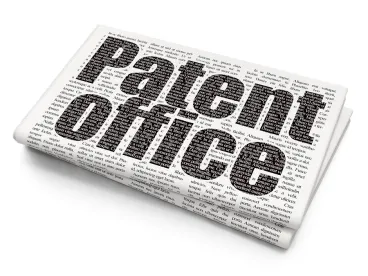Takeaway: Mere probability or possibility in a prior art reference disclosure falls short of demonstrating that the missing descriptive matter is necessarily present.
In its Decision, the Board concluded that Petitioner did not establish a reasonable likelihood of prevailing as to its challenge of claims 11-19 and 39-47 of the ’581 patent. The ’581 patent relates to “a system and method for collecting information about a device or user of the device.” Petitioner asserted three grounds of unpatentability based primarily on the Seiffert and Fawcett references, which the Board treated as seven separate grounds.
With respect to claim construction, the Board noted the parties’ competing constructions for a number of claim terms but decided that it “need not assess the parties’ proposed constructions because they are not necessary to resolve the dispositive issues.”
The Board then addressed the patentability challenges, under both Sections 102 and 103, based on the Seiffert reference, finding Petitioner’s arguments unpersuasive. In particular, the Board found that Petitioner had not established disclosure in the prior art of the limitation “communicating the information across the communication link back to the sender of the discovery rule” (the so-called “communicating” limitation), which is common to the challenged independent claims. In this regard, the Board found Patent Owner’s arguments persuasive and concluded that Petitioner’s expert testimony on the issue was not supported by underlying facts.
The Board then discussed the patentability challenges, also under both Sections 102 and 103, based on the Fawcett reference. The Board was not persuaded by Petitioner’s arguments, in particular with respect to the alleged disclosure of the limitation “receiving a discovery rule across a communication link from a sender,” recited in both challenged independent claims. In particular, the Board disagreed with Petitioner’s contention that the “diagnostic agent” disclosed in Fawcett “satisfie[d] both the ‘discovery rule’ and ‘discovery agent’ claim elements.” The Board noted that the “mere probability or possibility of ‘data evaluation code’ residing within the diagnostic agent of Fawcett falls short of demonstrating that the missing descriptive matter is necessarily present in Fawcett, as is required for a ground based on anticipation.” The obviousness challenges were also found unpersuasive for similar reasons.
Finally, the Board addressed Petitioner’s “invitation to review” obviousness in view of “Fawcett, Ghezzi and Berry in relation to claims 18 and 46.” The Board declined to review the asserted ground, finding “Petitioner does not articulate sufficiently why or how one of ordinary skill in the art would have combined or modified the teachings and suggestions of Fawcett and Ghezzi, or Fawcett, Ghezzi or Berry, to address with sufficient specificity the differences between the claimed invention and the prior art.”
Accordingly, the Petition was denied.
Int’l Business Machines Corp. v. Intellectual Ventures I LLC, IPR2015-01543
Paper 19: Decision Denying Institution of Inter Partes Review
Dated: April 18, 2016
Patent: 6,519,581 B1
Before: Meredith C. Petravick, Beverly M. Bunting, and Frances L. Ippolito
Written by: Bunting
Related Proceedings: Intellectual Ventures I LLC et al. v. Erie Indemnity Company, et al, Civ. No. 1:14-cv-00220 (W.D. Pa); Intellectual Ventures I LLC et al. v. Old Republic General Insurance Group, Inc., et al, Civ. No. 2:14-cv-01130 (W.D. Pa); Intellectual Ventures I LLC et al. v. Highmark, Inc., et al, Civ. No. 2:14-cv-01131 (W.D. Pa); IPR2015-01542; IPR2015-01956; IPR2015-01957



 />i
/>i

